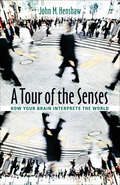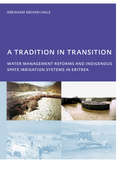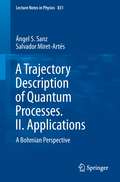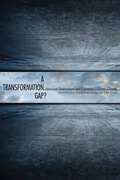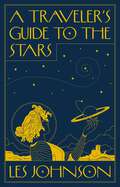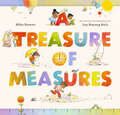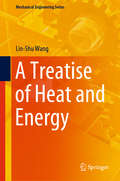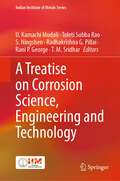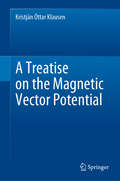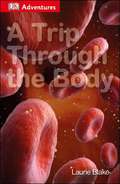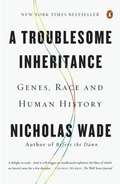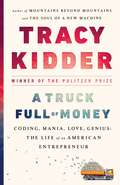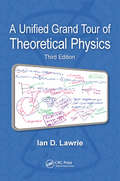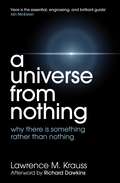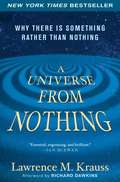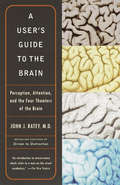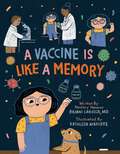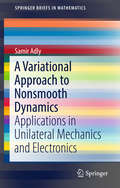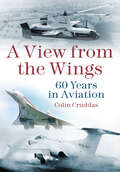- Table View
- List View
A Tour of the Senses: How Your Brain Interprets the World
by John M. Henshaw2012 Outstanding Academic Title, Choice MagazineEver wonder why some people have difficulty recognizing faces or why food found delicious in one culture is reviled in another? John M. Henshaw ponders these and other surprising facts in this fascinating and fast-paced tour of the senses.From when stimuli first excite our senses to the near-miraculous sense organs themselves to the mystery of how our brain interprets senses, Henshaw explains the complex phenomena of how we see, feel, taste, touch, and smell. He takes us through the rich history of sensory perception, dating back to Aristotle’s classification of the five main senses, and helps us understand the science and technology behind sensory research today.A Tour of the Senses travels beyond our human senses. Henshaw describes artificial sensing technologies and instruments, unusual sensory abilities of the animal kingdom, and techniques for improving, rehabilitating, and even replacing sense organs. This entertaining introduction to sensory science is a clever mix of research findings and real-world stories that helps us understand the complex processes that turn sensory stimuli into sophisticated brain responses.
A Tour of the Senses: How Your Brain Interprets the World
by John M. Henshaw“A blend of research findings and real-world anecdotes about people’s sensory experiences enlivens this historical view of the science behind perception.” —Science NewsEver wonder why some people have difficulty recognizing faces or why food found delicious in one culture is reviled in another? John M. Henshaw ponders these and other surprising facts in this fascinating and fast-paced tour of the senses.From when stimuli first excite our senses to the near-miraculous sense organs themselves to the mystery of how our brain interprets senses, Henshaw explains the complex phenomena of how we see, feel, taste, touch, and smell. He takes us through the rich history of sensory perception, dating back to Aristotle’s classification of the five main senses, and helps us understand the science and technology behind sensory research today.A Tour of the Senses travels beyond our human senses. Henshaw describes artificial sensing technologies and instruments, unusual sensory abilities of the animal kingdom, and techniques for improving, rehabilitating, and even replacing sense organs.This entertaining introduction to sensory science is a clever mix of research findings and real-world stories that helps us understand the complex processes that turn sensory stimuli into sophisticated brain responses.“A Tour of the Senses is a fun book, which may be of interest to anyone who’s ever wondered how the eye or ear works.” —American Journal of Human Biology
A Tradition in Transition, Water Management Reforms and Indigenous Spate Irrigation Systems in Eritrea: PhD, UNESCO-IHE Institute for Water Education, Delft, The Netherlands
by Abraham Mehari HaileA Tradition in Transition presents an in-depth assessment of the century-old Wadi Laba indigenous spate irrigation system in Eritrea. This system has relied on earthern and brushwood structures and customary water rules to support subsistence livelihoods of the Wadi Laba communities for many years. The book presents original research, which analyzes the effectiveness of contemporary water laws and a new headwork in improving production and standard of living. It also compares the lack of success of these new approaches with traditional methods of water management.
A Trajectory Description of Quantum Processes. II. Applications: A Bohmian Perspective (Lecture Notes in Physics #831)
by Ángel S. Sanz Salvador Miret-ArtésTrajectory-based formalisms are an intuitively appealing way of describing quantum processes because they allow the use of "classical" concepts. Beginning as an introductory level suitable for students, this two-volume monograph presents (1) the fundamentals and (2) the applications of the trajectory description of basic quantum processes. This second volume is focussed on simple and basic applications of quantum processes such as interference and diffraction of wave packets, tunneling, diffusion and bound-state and scattering problems. The corresponding analysis is carried out within the Bohmian framework. By stressing its interpretational aspects, the book leads the reader to an alternative and complementary way to better understand the underlying quantum dynamics.
A Transformation Gap?
by Theo Farrell Terriff Terry Osinga FransThis study, edited by Terriff (American security policy, U. of Calgary, Canada), Osinga (war studies, Royal Netherlands Military Academy) and Farrell (war studies, King's College London, UK), examines the extent to which there are gaps in the military transformation being led by the United States between various European members of the North Atlantic Treaty Organization. Case studies are presented for Britain, France, Germany, Spain, the Netherlands, and Poland. The case studies follow a common analytical framework that breaks transformation down into network-enablement, effects based operations, and expeditionary warfare and, for each of these, in terms of their respective technological, doctrinal, and organizational elements. These elements are further considered in light of the scholarly literature on military innovation, norm diffusion, and alliance theory. Stanford Security Studies is an imprint of Stanford University Press. Annotation ©2011 Book News, Inc. , Portland, OR (booknews. com)
A Traveler’s Guide to the Stars
by Les JohnsonA brief guide to the real science of interstellar travelWith known exoplanets now numbering in the thousands and initiatives like 100 Year Starship and Breakthrough Starshot advancing the idea of interstellar travel, the age-old dream of venturing forth into the cosmos and perhaps even colonizing distant worlds may one day become a reality. A Traveler&’s Guide to the Stars reveals how.Les Johnson takes you on a thrilling tour of the physics and technologies that may enable us to reach the stars. He discusses the latest exoplanet discoveries, promising interstellar missions on the not-so-distant horizon, and exciting new developments in space propulsion, power, robotics, communications, and more. But interstellar travel will not be easy, and it is not for the faint of heart. Johnson describes the harsh and forbidding expanse of space that awaits us, and he addresses the daunting challenges—both human and technological—that we will need to overcome in order to realize tomorrow&’s possibilities.A Traveler&’s Guide to the Stars is your passport to the next great frontier of human discovery, providing a rare inside look at the remarkable breakthroughs in science and technology that will help tomorrow&’s space travelers chart a course for the stars.
A Treasure of Measures
by Mike DownsThere are so many little life moments to measure—and so many creative ways to measure them!How do you measure how long it takes to read a good book? Sure, you can use units of time, like minutes or hours . . . but you can also use your very own measurements: how many times you laugh or cry, how many pages you turn, or how many times you ask to read it again. And measuring rainfall could mean using decibels of sound . . . or how many people you see opening umbrellas. This playful picture book introduces young readers to different units of measurement, then invites them to think of creative ways to quantify the meaningful moments in their lives. The possibilities are as limitless as the imagination!ENCOURAGES CURIOSITY: Every kid loves to count, measure, and quantify—even when the things they’re examining seem immeasurable at first glance! This nonfiction picture book encourages kids’ natural inclinations toward scientific thinking and their boundless imaginations, modeling unique ways to measure everything from the distance covered on a road trip to the brightness of stars and more!CELEBRATES SEEING AND EXPERIENCING: This charmingly illustrated book is a celebration of what is special about every day, no matter how small those moments may seem. Measuring is one way to really take in a new experience, after all. Kids will embrace the concept and the fun!ENGAGING READ-ALOUD: This picture book’s accessible rhyme, engaging content, and spirited illustrations make it a delightful read-aloud for classroom or family enjoyment.A SWEET GIFT BOOK: A meaningful message and adorable illustrations make this a go-to gift and an ideal addition to a child's library.Perfect for:Parents, grandparents, and caregivers of curious kidsLibrarians and teachers seeking engaging nonfiction books with STEM or STEAM contentAnyone seeking a distinctive gift that encourages imagination, creativity, and playBirthday, holiday, summer reading, or moving-up ceremony gift
A Treatise of Heat and Energy (Mechanical Engineering Series)
by Lin-Shu WangThis textbook explains the meaning of heat and work and the definition of energy and energy systems. It describes the constructive role of entropy growth and makes the case that energy matters, but entropy growth matters more. Readers will learn that heat can be transferred, produced, and extracted, and that the understanding of generalized heat extraction will revolutionize the design of future buildings as thermal systems for managing low grade heat and greatly contribute to enhanced efficiency of tomorrow’s energy systems and energy ecosystems. Professor Wang presents a coherent theory-structure of thermodynamics and clarifies the meaning of heat and the definition of energy in a manner that is both scientifically rigorous and engaging, and explains contemporary understanding of engineering thermodynamics in continuum of its historical evolution. The textbook reinforces students’ grasp of concepts with end-of-chapter problems and provides a historical background of pioneering work by Black, Laplace, Carnot, Joule, Thomson, Clausius, Maxwell, Planck, Gibbs, Poincare and Prigogine.Developed primarily as a core text for graduate students in engineering programs, and as reference for professional engineers, this book maximizes readers’ understanding and shines a light on new horizons for our energy future.
A Treatise on Corrosion Science, Engineering and Technology (Indian Institute of Metals Series)
by Radhakrishna G. Pillai U. Kamachi Mudali Toleti Subba Rao S. Ningshen Rani P. George T. M. SridharThis volume elaborates on various corrosion processes in different applications and their prevention strategies. It comprehensively covers the principles of corrosion, engineering issues, methods of corrosion protection and defines corrosion processes and control in select aggressive end industrial environments. The contents especially focus on corrosion issues in nuclear, aerospace, marine, high temperature, bioimplants, automobile, and addresses the application of advanced materials to mitigate them. A special section on corrosion prevention strategies with innovative solutions to resolve corrosion issues in various environments is the highlight of this book. This volume will be a useful guide for those in research, academia and industry, particularly to know state of art in corrosion control and prevention for various practical applications.
A Treatise on the Magnetic Vector Potential
by Kristján Óttar KlausenThe connection between the electric and magnetic fields is fundamental to our understanding of light as electromagnetic waves. The magnetic vector potential lies at the heart of this relation. The idea emerged in the early days of research in electromagnetism but was dismissed for more than half a century until the formulation of quantum electrodynamics. The magnetic vector potential is a pivotal concept with ties to many aspects of physics and mathematics. This book unravels the nature of the magnetic vector potential, highlights its connection to quantum mechanics and superconductivity, and explores the analogy with hydrodynamics.
A Trip Through the Body
by Laurie BlakeIs your child fascinated with the way the human body works? Do you have a budding junior biologist or doctor who's eager to learn more? DK Adventures: A Trip through the Body is a wonderful way to teach children about the human body through pictures and story. Through a combination of interesting storytelling and pictures, DK Adventures: A Trip through the Body is a great way for both avid readers and visual learners to learn more about the human body. In this story, Dan and Mya win a science competition and are given the opportunity to experience a tour of the human body. Using exciting new technology that allows them to travel through the body as if they're shrunk, they explore the systems of the human body, get propelled around by the blood stream, and are hurtled through windpipes and through the digestive system. They must navigate around the liver and escape from white blood cells in the bone marrow and into muscles. They're even propelled up the spinal cord in this story that will captivate children while teaching them more about the human body. DK Adventures is a book series that reluctant readers can enjoy as much as bookworms do! This series combines captivating, fictional stories with nonfiction facts to encourage learning and engagement in your child. The stories keep children interested, and the facts teach critical skills and knowledge — the fiction and nonfiction elements work together to keep each child's interest high, to build knowledge, and to enrich the narrative reading experience with fascinating background information. These books are filled with information, but the stories make them incredibly readable. DK Adventures are available in a range of kid-friendly topics, including dinosaurs, cars, and the human body, and each book supports Common Core State Standards and literacy skills.
A Trip into Space
by Lori Haskins Houran Francisca MarquezA lively, rhythmical story and detailed illustrations take readers on a trip to the International Space Station, where astronauts work, sleep, and walk in space! This great read-aloud includes the latest information (verified by NASA staff) about the ISS. Fact-filled and fun, this story will send young minds soaring.This is a fixed-format ebook, which preserves the design and layout of the original print book.
A Troop of Kangaroos: A Book of Animal Group Names
by Lisa MundorffA party of jays, a parade of elephants, a stench of skunks, and so many more make up this delightfully funny and informative picture book about animal group names! Packed with vibrant art, young readers will not only learn what we call certain groups of animals, but it will tickle them with literal images. That party of jays? Those birds have party hats and streamers galore! A Troop of Kangaroos is early nonfiction that will entertain and teach.
A Troublesome Inheritance
by Nicholas WadeDrawing on startling new evidence from the mapping of the genome, an explosive new account of the genetic basis of race and its role in the human story Fewer ideas have been more toxic or harmful than the idea of the biological reality of race, and with it the idea that humans of different races are biologically different from one another. For this understandable reason, the idea has been banished from polite academic conversation. Arguing that race is more than just a social construct can get a scholar run out of town, or at least off campus, on a rail. Human evolution, the consensus view insists, ended in prehistory. Inconveniently, as Nicholas Wade argues in A Troublesome Inheritance, the consensus view cannot be right. And in fact, we know that populations have changed in the past few thousand years--to be lactose tolerant, for example, and to survive at high altitudes. Race is not a bright-line distinction; by definition it means that the more human populations are kept apart, the more they evolve their own distinct traits under the selective pressure known as Darwinian evolution. For many thousands of years, most human populations stayed where they were and grew distinct, not just in outward appearance but in deeper senses as well. Wade, the longtime journalist covering genetic advances for The New York Times, draws widely on the work of scientists who have made crucial breakthroughs in establishing the reality of recent human evolution. The most provocative claims in this book involve the genetic basis of human social habits. What we might call middle-class social traits--thrift, docility, nonviolence--have been slowly but surely inculcated genetically within agrarian societies, Wade argues. These "values" obviously had a strong cultural component, but Wade points to evidence that agrarian societies evolved away from hunter-gatherer societies in some crucial respects. Also controversial are his findings regarding the genetic basis of traits we associate with intelligence, such as literacy and numeracy, in certain ethnic populations, including the Chinese and Ashkenazi Jews. Wade believes deeply in the fundamental equality of all human peoples. He also believes that science is best served by pursuing the truth without fear, and if his mission to arrive at a coherent summa of what the new genetic science does and does not tell us about race and human history leads straight into a minefield, then so be it. This will not be the last word on the subject, but it will begin a powerful and overdue conversation.
A Troublesome Inheritance: Genes, Race and Human History
by Nicholas WadeDrawing on startling new evidence from the mapping of the genome, an explosive new account of the genetic basis of race and its role in the human story Fewer ideas have been more toxic or harmful than the idea of the biological reality of race, and with it the idea that humans of different races are biologically different from one another. For this understandable reason, the idea has been banished from polite academic conversation. Arguing that race is more than just a social construct can get a scholar run out of town, or at least off campus, on a rail. Human evolution, the consensus view insists, ended in prehistory.Inconveniently, as Nicholas Wade argues in A Troublesome Inheritance, the consensus view cannot be right. And in fact, we know that populations have changed in the past few thousand years--to be lactose tolerant, for example, and to survive at high altitudes. Race is not a bright-line distinction; by definition it means that the more human populations are kept apart, the more they evolve their own distinct traits under the selective pressure known as Darwinian evolution. For many thousands of years, most human populations stayed where they were and grew distinct, not just in outward appearance but in deeper senses as well.Wade, the longtime journalist covering genetic advances for The New York Times, draws widely on the work of scientists who have made crucial breakthroughs in establishing the reality of recent human evolution. The most provocative claims in this book involve the genetic basis of human social habits. What we might call middle-class social traits--thrift, docility, nonviolence--have been slowly but surely inculcated genetically within agrarian societies, Wade argues. These "values" obviously had a strong cultural component, but Wade points to evidence that agrarian societies evolved away from hunter-gatherer societies in some crucial respects. Also controversial are his findings regarding the genetic basis of traits we associate with intelligence, such as literacy and numeracy, in certain ethnic populations, including the Chinese and Ashkenazi Jews.Wade believes deeply in the fundamental equality of all human peoples. He also believes that science is best served by pursuing the truth without fear, and if his mission to arrive at a coherent summa of what the new genetic science does and does not tell us about race and human history leads straight into a minefield, then so be it. This will not be the last word on the subject, but it will begin a powerful and overdue conversation.From the Trade Paperback edition.
A Truck Full of Money: One Man's Quest to Recover from Great Success
by Tracy Kidder"A perfectly executed, exquisitely reported parable of the Internet age and the wild, mad adventure that is start-up culture."--Charles Duhigg Fortune, mania, genius, philanthropy--the bestselling author of Mountains Beyond Mountains gives us the inspiring story of Paul English, the founder of Kayak.com and Lola. Tracy Kidder, the "master of the nonfiction narrative" (The Baltimore Sun) and author of the bestselling classic The Soul of a New Machine, now tells the story of Paul English, a kinetic and unconventional inventor and entrepreneur, who as a boy rebelled against authority. Growing up in working-class Boston, English discovers a medium for his talents the first time he sees a computer. As a young man, despite suffering from what would eventually be diagnosed as bipolar disorder, he begins his pilgrim's journey through the ups and downs in the brave new world of computers. Relating to the Internet as if it's an extension of his own mind, he discovers that he has a talent for conceiving innovative enterprises and building teams that can develop them, becoming "a Pied Piper" of geeks. His innovative management style, success, and innate sense of fair play inspire intense loyalty. Early on, one colleague observes: "Someday this boy's going to get hit by a truck full of money, and I'm going to be standing beside him." Yet when English does indeed make a fortune, when the travel website Kayak is sold for almost two billion dollars--the first thing he thinks about is how to give the money away: "What else would you do with it?" The second thing he thinks is, What's next? With the power of a consummate storyteller, Tracy Kidder casts a fresh, critical, and often humorous eye on the way new ideas and new money are reshaping our culture and the world. A Truck Full of Money is a mesmerizing portrait of an irresistibly endearing man who is indefatigable, original, and as unpredictable as America itself. Advance praise for A Truck Full of Money"A perfectly executed, exquisitely reported parable of the Internet age, and the wild, mad adventure that is start-up culture."--Charles Duhigg "A Truck Full of Money brings us into unknown spaces of the complex workings of the mind--of a brilliant software engineer, of this new decade, of the brutal/fast business of technology, of stunning privilege, and of one man's efforts to put his fortune to humane use."--Adrian Nicole LeBlanc"The story of [an] entrepreneur's remarkable life [and] the new American economy and the technological world that built it. More engrossing work from a gifted practitioner of narrative nonfiction."--Kirkus ReviewsFrom the Hardcover edition.
A Tutorial on the WKB Approximation for Innovative Dirac Materials: Graphene and Beyond (Springer Tracts in Modern Physics #292)
by Andrii IurovThis textbook serves to supplement existing quantum mechanics courses with the WKB (Wentzel–Kramers–Brillouin) theory for recently discovered Dirac materials, such as graphene, a dice lattice, and alpha-T3 materials. This includes finding the semiclassical wave function, coordinate-dependent momentum, semiclassical action, the complete set of transport equations, and applicability conditions for the approximation. The discovery of graphene and its unique electronic behavior has transformed research in condensed matter physics over the last 10-15 years, but core curriculum in standard graduate-level physics courses still does not reflect these new developments and this book intends to close this gap. With a clear focus on various types of Dirac Hamiltonians, the multidimensional theory is only a small part of the book. The derivation of the WKB equations for novel Dirac materials and their applications to electron tunneling, turning points and classically forbidden regions, resonances and localized states, and many other crucial physical problems are methodically presented. This textbook aims to expand the existing approach to presenting the WKB approximation and covers recent developments in its applications. This book also includes many informative graphics, as well as problems and exercises with hints at the end of each chapter. Additional detailed mathematical derivations, as well as code in Mathematica, are added throughout the whole book. Ideal for graduate students and researchers in condensed matter physics, this textbook serves as a modern guide for learning the WKB theory.
A Unified Grand Tour of Theoretical Physics
by Ian D. LawrieA Unified Grand Tour of Theoretical Physics invites its readers to a guided exploration of the theoretical ideas that shape our contemporary understanding of the physical world at the fundamental level. Its central themes, comprising space-time geometry and the general relativistic account of gravity, quantum field theory and the gauge theories of
A Universe From Nothing
by Lawrence M. KraussInternationally renowned theoretical physicist and bestselling author Lawrence Krauss offers provocative, revelatory answers to the biggest philosophical questions: Where did our universe come from? Why does anything exist? And how is it all going to end? 'Why is there something rather than nothing?' is the question atheists and scientists are always asked, and until now there has not been a satisfying scientific answer. Today, exciting scientific advances provide new insight into this cosmological mystery: not only can something arise from nothing, but something will always arise from nothing. A mind-bending trip back to the beginning of the beginning, A Universe from Nothing authoritatively presents the most recent evidence that explains how our universe evolved - and the implications for how it's going to end. It will provoke, challenge, and delight readers to look at the most basic underpinnings of existence in a whole new way. In the words of Richard Dawkins: this could potentially be the most important scientific book since Darwin's On the Origin of Species.
A Universe from Nothing
by Lawrence M. Krauss“WHERE DID THE UNIVERSE COME FROM? WHAT WAS THERE BEFORE IT? WHAT WILL THE FUTURE BRING? AND FINALLY, WHY IS THERE SOMETHING RATHER THAN NOTHING?” Lawrence Krauss’s provocative answers to these and other timeless questions in a wildly popular lecture now on YouTube have attracted almost a million viewers. The last of these questions in particular has been at the center of religious and philosophical debates about the existence of God, and it’s the supposed counterargument to anyone who questions the need for God. As Krauss argues, scientists have, however, historically focused on other, more pressing issues—such as figuring out how the universe actually functions, which can ultimately help us to improve the quality of our lives. Now, in a cosmological story that rivets as it enlightens, pioneering theoretical physicist Lawrence Krauss explains the groundbreaking new scientific advances that turn the most basic philosophical questions on their heads. One of the few prominent scientists today to have actively crossed the chasm between science and popular culture, Krauss reveals that modern scienceisaddressing the question of why there is something rather than nothing, with surprising and fascinating results. The staggeringly beautiful experimental observations and mind-bending new theories are all described accessibly inA Universe from Nothing,and they suggest that not onlycansomething arise from nothing, something willalwaysarise from nothing. With his characteristic wry humor and wonderfully clear explanations, Krauss takes us back to the beginning of the beginning,presenting the most recent evidence for how our universe evolved—and the implications for how it’s going to end. It will provoke, challenge, and delight readers as it looks at the most basic underpinnings of existence in a whole new way. And this knowledge that our universe will be quite different in the future from today has profound implications and directly affects how we live in the present. As Richard Dawkins has described it: This could potentially be the most important scientific book with implications for supernaturalism since Darwin. A fascinating antidote to outmoded philosophical and religious thinking,A Universe from Nothingis a provocative, game-changing entry into the debate about the existence of God and everything that exists. “Forget Jesus,” Krauss has argued, “the stars died so you could be born. ”
A Universe from Nothing: Why There Is Something Rather than Nothing (Playaway Adult Nonfiction Ser.)
by Lawrence M. Krauss Richard DawkinsBestselling author and acclaimed physicist Lawrence Krauss offers a paradigm-shifting view of how everything that exists came to be in the first place."Where did the universe come from? What was there before it? What will the future bring? And finally, why is there something rather than nothing?"One of the few prominent scientists today to have crossed the chasm between science and popular culture, Krauss describes the staggeringly beautiful experimental observations and mind-bending new theories that demonstrate not only can something arise from nothing, something will always arise from nothing. With a new preface about the significance of the discovery of the Higgs particle, A Universe from Nothing uses Krauss's characteristic wry humor and wonderfully clear explanations to take us back to the beginning of the beginning, presenting the most recent evidence for how our universe evolved--and the implications for how it's going to end. Provocative, challenging, and delightfully readable, this is a game-changing look at the most basic underpinning of existence and a powerful antidote to outmoded philosophical, religious, and scientific thinking.
A User's Guide to the Brain: Perception, Attention, and the Four Theatres of the Brain
by John J. RateyJohn Ratey, bestselling author and clinical professor of psychiatry at Harvard Medical School, here lucidly explains the human brain’s workings, and paves the way for a better understanding of how the brain affects who we are. Ratey provides insight into the basic structure and chemistry of the brain, and demonstrates how its systems shape our perceptions, emotions, and behavior. By giving us a greater understanding of how the brain responds to the guidance of its user, he provides us with knowledge that can enable us to improve our lives. InA User’s Guide to the Brain, Ratey clearly and succinctly surveys what scientists now know about the brain and how we use it. He looks at the brain as a malleable organ capable of improvement and change, like any muscle, and examines the way specific motor functions might be applied to overcome neural disorders ranging from everyday shyness to autism. Drawing on examples from his practice and from everyday life, Ratey illustrates that the most important lesson we can learn about our brains is how to use them to their maximum potential.
A Vaccine Is Like a Memory
by Rajani LaRoccaThis timely book details the importance of vaccines and how they were developed throughout history, as well as how they work to protect your body and keep it healthy.Do you remember every time you've been sick?You may not, but your body does! With many illnesses, you can't get sick more than once because your body remembers and fights it off before you get sick again. But what if your body could recognize germs that you've never had before so you don't get ill? There's where vaccines come in! This book comes complete with extensive back matter all about types of germs and vaccines.
A Variational Approach to Nonsmooth Dynamics
by Samir AdlyThis brief examines mathematical models in nonsmooth mechanics and nonregular electrical circuits, including evolution variational inequalities, complementarity systems, differential inclusions, second-order dynamics, Lur'e systems and Moreau's sweeping process. The field of nonsmooth dynamics is of great interest to mathematicians, mechanicians, automatic controllers and engineers. The present volume acknowledges this transversality and provides a multidisciplinary view as it outlines fundamental results in nonsmooth dynamics and explains how to use them to study various problems in engineering. In particular, the author explores the question of how to redefine the notion of dynamical systems in light of modern variational and nonsmooth analysis. With the aim of bridging between the communities of applied mathematicians, engineers and researchers in control theory and nonlinear systems, this brief outlines both relevant mathematical proofs and models in unilateral mechanics and electronics.
A View from the Wings: 60 Years in British Aviation
by Colin CruddasMany books have been produced which detail the lives and thoughts of famous individuals. A View from the Wings is unique, recalling a wartime boyhood in which aircraft flying constantly overhead played a large part. This experience led to a lifetime career in the aviation industry both in the UK and overseas such as the US and South Africa. Mixed with events of a more personal nature often coated with whimsical humour, the author has evocatively captured the rise and demise of Britain’s aircraft industry in the post-war period. In setting out to be non-technical, A View from the Wings will appeal to those whose memories embrace the sound barrier-breaking years and the leap of faith and technology that saw Concorde defeat the Americans in the race to produce a practical supersonic airliner. All too often political procurement and technical failures have made for dramatic headlines and these too are subjected to much critical comments. Think of the critically acclaimed Empire of the Clouds (Faber and Faber, 2010), but instead of a boyhood observer, the author was an active part of the British aviation industry in its former prime and eventual implosion.
